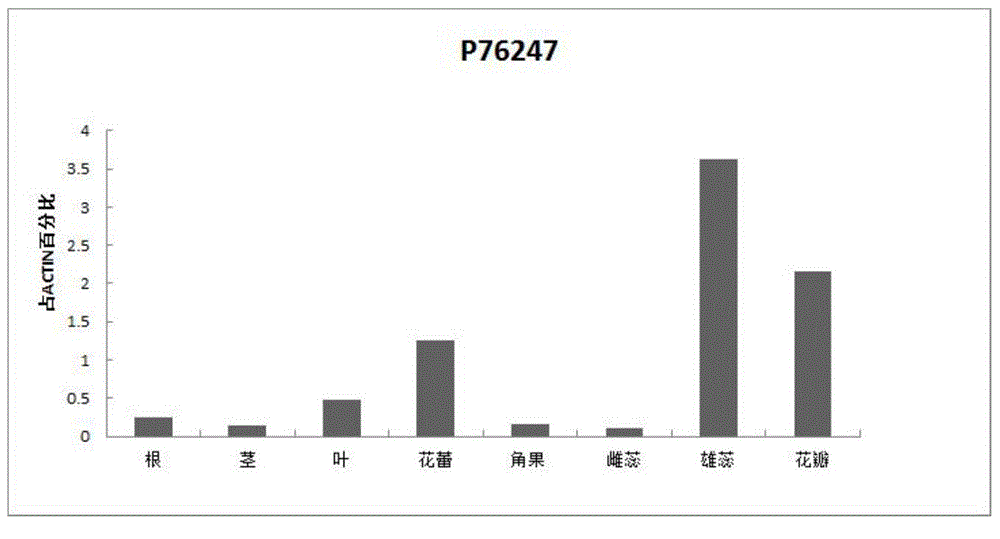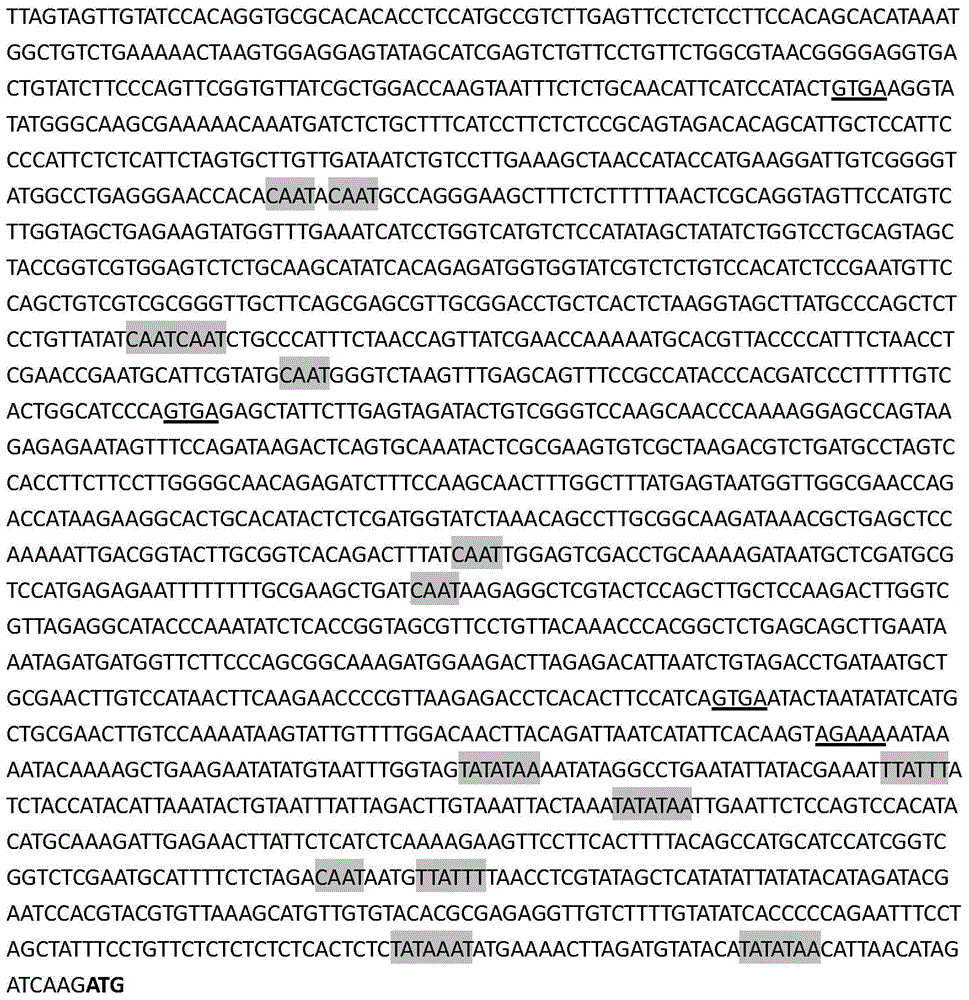Brassica napus p76247 promoter and its preparation method and application
A technology of Brassica napus, pbi-p76247, applied in the field of plant genetic engineering and biology, can solve problems such as unsuitable production practice, unfavorable normal plant growth, and harmful ecological environment
- Summary
- Abstract
- Description
- Claims
- Application Information
AI Technical Summary
Problems solved by technology
Method used
Image
Examples
Embodiment 1
[0077] Prediction of anther-specific expression gene Bn76247 and promoter P76247:
[0078] The used rapeseed of the present invention is Brassica napus Zhongshuang No. 11 (mentioned above). The test materials were sown in the field and managed normally. Eleven tissues including roots, stems, leaves, flower buds, ovules, siliques, silique peels, petals, pistils, sepals and petals were obtained from rapeseed plants grown under field growth conditions. Take at least three replicates of each material, and each replicate has at least one plant. After sampling, wrap it in tin foil, quickly place it in liquid nitrogen quick-freezing, and store it at -80°C. RNA was extracted using the Trirol extraction kit (described above) according to the requirements of the kit. The extracted RNA was sent to Shenzhen BGI Institute for reverse transcription, library construction, and transcriptome sequencing using the solexa sequencing technology (described above). The amount of sequencing data f...
Embodiment 2
[0080] Analysis of expression patterns of endogenous genes driven by rapeseed P76247:
[0081] The test materials were sown in the field and managed normally. Get roots, stems, leaves, flower buds, siliques, pistils, petals and petals from the rapeseed Zhongshuang No. 11 (as described above) plant grown under field growth conditions. Take at least three replicates of each material, and each replicate has at least one plant. After sampling, wrap it in tin foil, place it quickly in liquid nitrogen, and store it at -80°C. Extract RNA (method described above). The fluorescent quantitative PCR instrument was IQ5 (Bio-Rad Company), and rape Actin (accession number AF111812) was used as the internal standard gene. The Actin gene primers were the forward primer 5′-CTGGAATTGCTGACCGTATGAG-3′ and the reverse primer 5′-ATCTGTTGGAAAGTGCTGAGGG-3′. The primers of the endogenous gene Bn76247 driven by P76247 were 5'5'TTTGTTACCGTGCTGCTCA3' and 5'AAAGCCGTCCATCTATCAT3'. Fluorescent quantitati...
Embodiment 3
[0085] A method for preparing a Brassica napus promoter P76247 promoter, the steps are:
[0086] 1. The primer sequence of rapeseed promoter P76247:
[0087] According to the upstream 2kb sequence of the Bn76247 gene obtained from rape genome sequencing, a pair of primers were designed for PCR amplification.
[0088] 2. Preparation of rapeseed promoter P76247:
[0089] Use the SDS lysis method (described above) to extract genomic DNA from rapeseed leaves, and use this as a template for PCR amplification. The steps are: extract 25 μl of genomic DNA, and use this as a template for amplification. The reaction system is 50 μl, and 5 μl of 10×ExTaqbuffer is added respectively. 4 μl of dNTP, 1 μl of 5’ primer, 1 μl of 3’ primer, 0.5 μl of ExTaq, 1 μl of DNA template, about 100 ng, ddH 2O 37.5 μl. The primers used in PCR design were P76247S and P76247A (described above) based on the upstream 2kb sequence of the Bn76247 gene obtained from rapeseed whole genome sequencing. The size...
PUM
 Login to View More
Login to View More Abstract
Description
Claims
Application Information
 Login to View More
Login to View More - R&D
- Intellectual Property
- Life Sciences
- Materials
- Tech Scout
- Unparalleled Data Quality
- Higher Quality Content
- 60% Fewer Hallucinations
Browse by: Latest US Patents, China's latest patents, Technical Efficacy Thesaurus, Application Domain, Technology Topic, Popular Technical Reports.
© 2025 PatSnap. All rights reserved.Legal|Privacy policy|Modern Slavery Act Transparency Statement|Sitemap|About US| Contact US: help@patsnap.com



